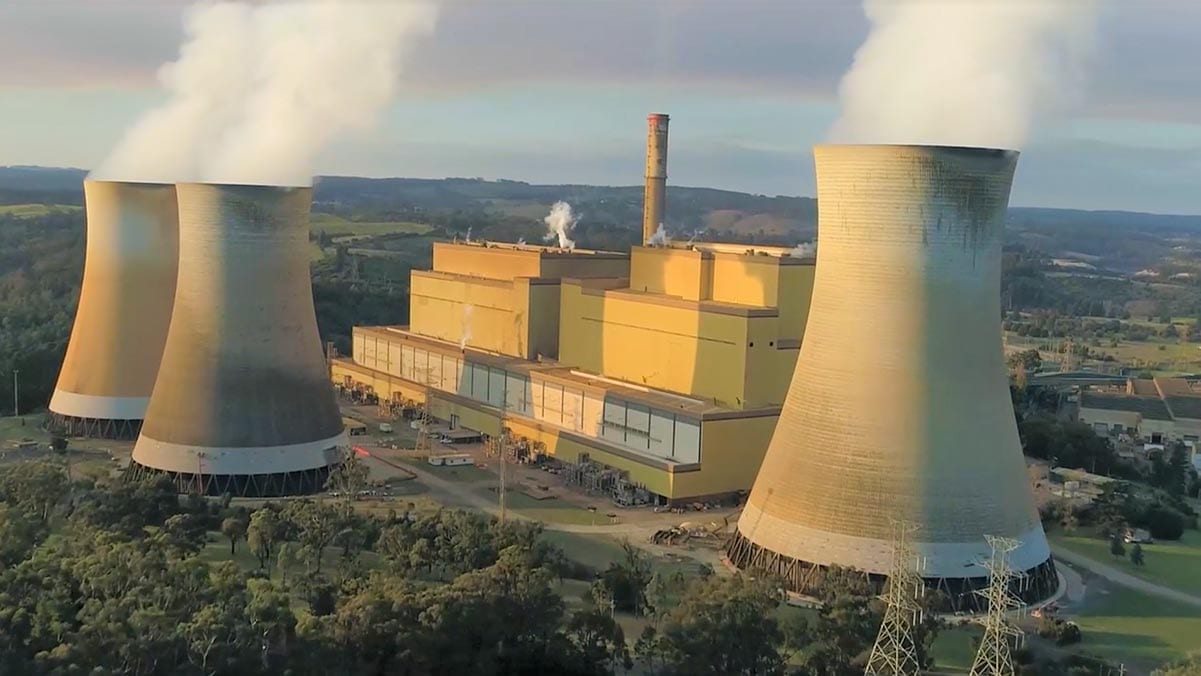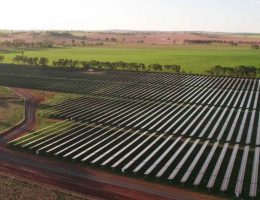EnergyAustralia announced an early closure of the Yallourn power station on Wednesday, but rather than throwing the energy market into chaos, the certainty of Yallourn’s closure has been uniformly welcomed by everyone other than the Morrison government.
The Australian Energy Market Operator, the institution responsible for keeping the lights on, praised the significant notice period given by EnergyAustralia, and that the closure of additional coal fired power stations are already expected over the next two decades.
“AEMO welcomes the certainty as to the future of the Yallourn Power Station and the commitment to build a 350-megawatt battery in the Latrobe Valley,” a spokesperson for AEMO said.
“Today’s announcement allows for a considered market response to facilitate an orderly transition of the National Electricity Market.”
“The 2020 Integrated System Plan flagged that 63 per cent of today’s coal-fired power stations would retire by 2040, replaced by wind and solar projects, which would be complemented by firming generation, such as battery storage, pumped hydro and gas.”
Victorian energy minister Lily D’Ambrosio, also welcomed the investments being made by EnergyAustralia in both worker transition initiatives, as well as the construction of a new big battery in the Latrobe Valley. She said such closures were a reflection of the realities of an evolving energy market.
“The truth is we’re seeing these old, coal fired power stations creaking to a stop right around the world as countries and companies are switching to new, clean, more reliable and more efficient forms of energy,” D’Ambrosio said.
“We can’t ignore that change or pretend it’s not happening – and we owe it to these workers to build a modern energy network that creates and supports thousands of Victorian jobs.
“We welcome EnergyAustralia’s investment in a $10 million support package to assist its workforce with the transition. EnergyAustralia will also build a 350 megawatt four-hour duration battery by 2026 to ensure an orderly transition that keeps the lights on and deliver certainty to new clean energy generation projects connecting to the network,” D’Ambrosio added.
However, while business groups also welcomed the advance notice, and said a proper plan should ensure energy supplies are maintained, the Morrison government – which ought to play a key role in ensuring a co-ordinated an planned response – has been predictably less positive, raising fears of a potential repeat of the fallout of the closure of the Hazelwood power station, and warning off other energy companies contemplating their own early coal exits.
Federal energy and emissions reduction minister Angus Taylor has been outspoken against any moves that would see any coal fired power stations close early, including open criticism of NSW Liberal party colleague Matt Kean for his ambitious vision for replacing NSW’s coal power stations with renewables in advance of their closure.
In a statement released on Wednesday, Taylor said the early closure of the Yallourn plant raised ‘concerns’.
“While the Commonwealth Government understands this is a commercial decision, the exit of 1480MW of reliable energy generation brings with it reliability and affordability concerns,” Taylor said.
Taylor compared the closure to the fallout of the closure of the Hazelwood power station, which closed in March 2017 with just months of warning. EnergyAustralia has given seven years notice of the Yallourn closure, as AGL did with Liddell.
Despite this, Taylor sought to raise fears that an early closure of the Yallourn power station could see wholesale electricity prices ‘skyrocket’.
“While coal exits impact reliability and system security, the major impact for consumers will be the significant increase in prices if not adequately replaced with dispatchable capacity. We have already seen this happen with the closures of Northern in South Australia and most recently Hazelwood in Victoria, where wholesale prices skyrocketed by 85 per cent,” Taylor said.
However, Australian Industry Group chief Innes Wilcox said that the substantial amount of notice given by EnergyAustralia, which is in excess of the five years of notice required by the Victorian government, will help avoid any repeat of the fallout from the closure of the Hazelwood power station.
“Nobody wants to see a repeat of the Hazelwood experience, when its rapid exit early in 2017 left no time for investors, energy users or communities to prepare. In a suddenly tight electricity market prices surged and reliability was under question each summer until private investment and government action caught up in 2020,” Wilcox said.
“EnergyAustralia has made that process much easier by providing clear guidance seven years in advance, well beyond their regulatory obligation, and by working with the Victorian Government on the transition with a major storage investment and a worker package.”
The Victorian government has struck a deal with EnergyAustralia to provide financial support, ensuring the closure of the power station and its impacts on workers can be appropriately managed.
Environment Victoria called on the Victorian government to move faster on a transition away from coal and called for closure dates to be set for all remaining coal fired power stations before 2030 and that governments needed to take a greater hands-on role in managing the closure schedule.
“Are we going to have 20 separate closure announcements, each one dictated by an energy company based on the whims of the market, with months of speculation beforehand? Governments across Australia need to step in and create a timeline to phase out all coal power stations by 2030 in order to reduce pollution and address the climate crisis,” Environment Victoria CEO Jono La Nauze said.
“The Victorian government needs to move faster on the energy transition if it wants to keep up with the global pace on climate action. Meanwhile Federal Energy Minister Angus Taylor continues to ignore that Australia is moving beyond coal.”
It was a call echoed by the Friends of the Earth, which have run an ongoing campaign in Victoria in support of a transition away from coal generation, and said that both federal and state governments needed to be engaged in actively managing coal plant closures.
“The market has decided that fossil fuels are facing rapid decline,” Friends of the Earth campaigner Leigh Ewbank said. “State and Federal governments must accept this fact and act by instigating a staged and funded transition program to replace ageing coal power plants with renewable energy.”
“If we’re to avoid catastrophic climate impacts such as the Black Summer bushfires, then all levels of government must plan for a fast and fair closure of coal-burning power stations.”










